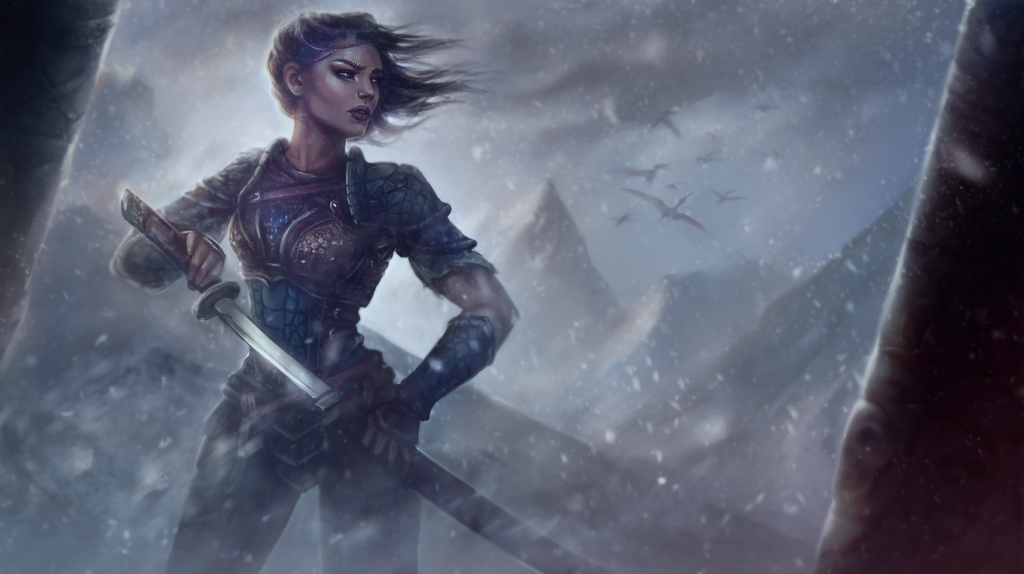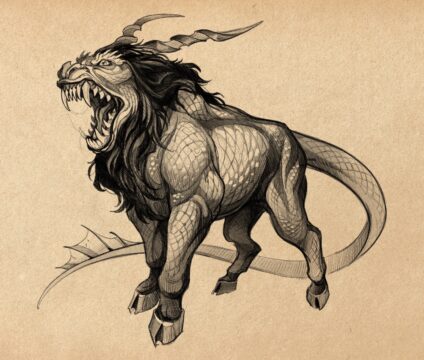Thousands. In writing my debut novel, Perils of the Past, it’s taken thousands of ideas (big and small) to complete the first draft.
Emily Dickinson, a famous American poet, wrote about how the brain “is wider than the Sky” and “deeper than the sea” (you can find her beautiful poem here). I’ve taken much joy in the creativity and depths of the imagination that it has taken to write my debut novel.
How did it start?
They say that every story begins with an idea. My first idea came to me over 15 years ago. I’d like to say the whole story blossomed in my mind (wouldn’t that be nice). But it was just an image, an image of Antarna in a temple on a snow-capped mountain—not that I’d named her at the time. Shortly after, I pictured a key event in her backstory.

Plenty of ideas followed. Most weren’t strong enough to survive the passage of time. In a lecture, Stephen King talked about ideas and time in this way: if you put breadcrumbs in a strainer and shake, then all the small and unimportant stuff falls out and you’re left with the large chunks, the good stuff. So, as time passes (and the strainer shakes), only the best ideas remain. I’ve found this to be true of the key ideas at least.
Some years later, learning how PET scans are taken sparked an idea about my magic system and a danger that now sits at the heart of my story. (For a PET scan, a patient is given a radioactive drug and the PET scanner rotates around the body to image the cancer or body part, etc. My idea sprung from the physics and chemistry underlying it.)
Of course, a lead character (Antarna, my protagonist), the start of a magic system and a dangerous possibility is not a novel. If my novel is a loaf of bread, then I’ve got a few decent crumbs.
Thousands of ideas
During COVID-19, I got serious about writing my novel, sitting down at the keyboard five or six days a week for two years until I finally typed the last line of the first draft (and then the editing began).
Most writing sessions (even the shorter ones) resulted in at least a handful of new ideas. And ideas would pour in when my mind had enough space to accommodate them—usually when running, unpacking the dishwasher, showering, hanging the washing, etc.
Only a fraction of the ideas found a home in the pages of my novel. The more of my novel that I wrote, the more I appreciated that:
- to create a rich, immersive fantasy world and characters of flesh and blood (with unique personalities, goals, talents, fears, misbeliefs, secrets, etc), my notes had to be far more detailed than what made it into the book;
- less is more. Great description quickly paints a vivid picture. A few choice dynamic words (those that involve movement, instead of being static) and some sensory language (like the crackle of the fire) are enough to ground the reader in the scene and invoke the mood. With those, their imagination can fill the rest of the room, street, beach or forest. Long passages of description just slow the story down. I had to be selective;
- even in a novel of a little over 100,000 words (a common length for high fantasy), I had to make every one of them count. It can easily accommodate a solid cast of characters, a detailed world, a twisting plot, a few subplots and a powerful story. But, without restraint, without making sure that everything serves a purpose, without keeping writing craft and the overall structure in mind, it’s easy to lose your way (e.g., to info-dump, add extra characters, try to be too clever, try to do too much). Of course, part of this lies in the editing phase, after the first draft is done;
- usually, my first ideas were not my finest. I had to generate lots of ideas to find those. I also had to critically examine my ideas, question my assumptions, and think deeply about what resonated with me. For example, initially I’d pictured that my world would be akin to Europe in the medieval era. No doubt because most of the fantasy novels I’d recently read were set there. But as I thought about it further, I knew that I wanted something different. Perils of the Past is set in a bronze-age world where the four races cower in their naturally defensible cities from roaming and soaring predators.

In writing my novel, I gained a new appreciation for authors and for writing.
